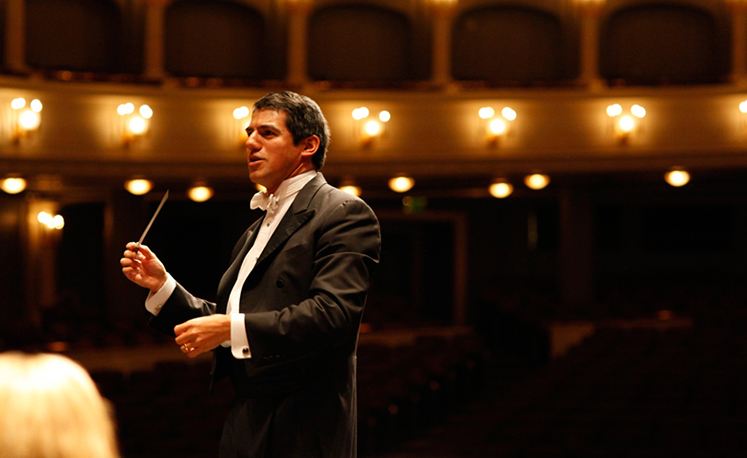Rachmaninoff’s Symphony No. 2 in E minor, once considered an interesting but over-indulgent aberration of late romanticism (and often performed with undermining cuts), has come into its own in recent years as one of the masterpieces of the symphonic repertoire. Friday night this passionate, beautifully conceived score (performed without cuts) provided the crowning moment of the first classical concert of 2015 for the Fort Worth Symphony and music director Miguel Harth-Bedoya at Bass Performance Hall.
Twenty-first-century listeners, cured of the distaste for emotion and sweeping melody that dominated musical aesthetics in the middle years of the 20th century, have come to appreciate both the scale of the work (comparable to the monumental creations of Bruckner and Mahler) and the intricate interweaving of musical ideas and emotions, as expertly and bravely plotted as the fictional epics of Rachmaninoff’s literary contemporary Tolstoy.
And conductor Harth-Bedoya demonstrated both an admirable sensitivity to the breadth of the score and the possibilities it holds for the Fort Worth Symphony. Rather than going for a lush, big-orchestra sound from the string section, Harth-Bedoya aimed for a lean, precise but beautiful tone, with suitably grand effects at appropriate moments. The clear, brilliant sheen of the strings was particularly striking in the beloved Largo movement. (Don’t blame Rachmaninoff for the cheesy pop song derived from the main theme of that movement!)
As for performing this 58-minute-long score without cuts, this is clearly a case in which the uncut version, simply because it makes more sense, feels shorter than the abridged versions we used to hear. Rachmaninoff tends to linger meaningfully at times—as in the coda of the Largo—or to take us, like Tolstoy, in unexpected directions—as in the coda of the opening movement. Harth-Bedoya’s tight control of the material absolutely justified all of these decisions by the composer. (Rachmaninoff’s equally masterful, more compact Third Symphony would certainly be a welcome item on concerts in these parts sometime in the future, by the way.)
Harth-Bedoya and the orchestra had devoted the first half of the concert to works of American composers, opening with Copland’s Fanfare for the Common Man. This oft-repeated, occasionally abused work for brass and percussion proved newly intriguing as the opening item of the orchestra’s year, creating a palpable aura of excitement in the hall, and beautifully setting up the quiet opening of the subsequent Concerto for Percussion by Jennifer Higdon.
At this point, although the introductory conversation between percussion soloist Colin Currie and conductor Harth-Bedoya ran smoothly and let us in on the intriguing fact that one of the many instruments Currie would play was a brake drum salvaged from a scrap yard in Edinburgh, n immediate move to the Concerto would have been even more dramatically, emotionally, and musically effective.
The 23-minute Concerto, which premiered with Scottish-born Currie as soloist with the Philadelphia Orchestra in 2005, rises magically out of a quiet opening marimba tremolo; lyrical melodies and resonant harmonies (reminiscent of Copland and other mid-20th-century symphonists) interweave moments of breathtaking quiet and strategic silences for an engagingly rhapsodic effect. Although existing largely as a perpetual three-way conversation among the percussion soloist, the orchestral percussion section, and the main orchestra, the work also functions as a terrific showpiece for Currie, who rushes from xylophone to marimba to a host of other smaller instruments arrayed across the front of the stage. At the conclusion, the audience rewarded Currie and the orchestra with well-deserved cheers.
This particular concert, incidentally, could serve as a lesson in programming, with its intricate and intriguing set of inter-relationships. It had just about everything one could wish for in a concert: the separate pieces fit together neatly, with a masterpiece from the past, a masterpiece by a living composer, a succinct and spine-tingling curtain-raiser, and several intriguing contrasts—most notably, between the unmistakable Americanism of Copland’s Fanfare on one hand and the intense Russian flavor of Rachmaninoff’s Second Symphony at the other.





